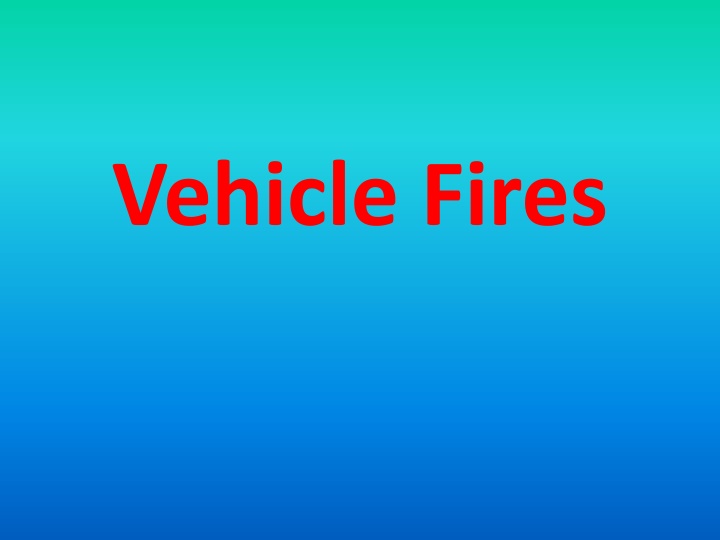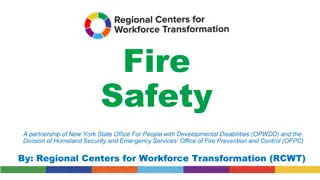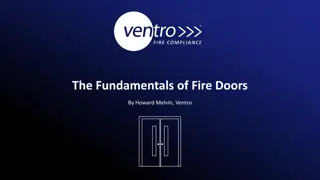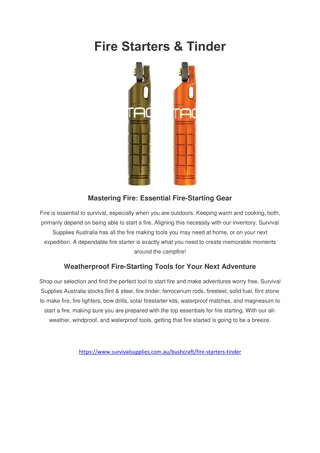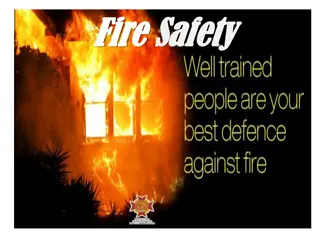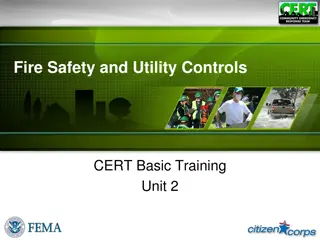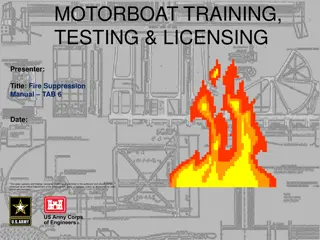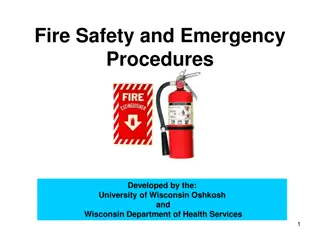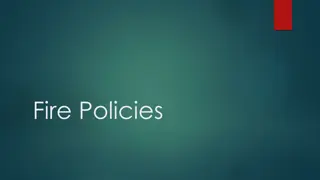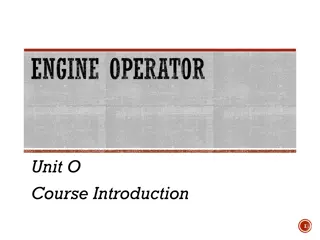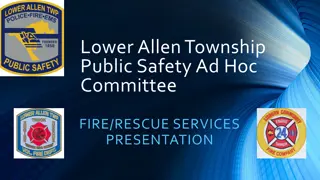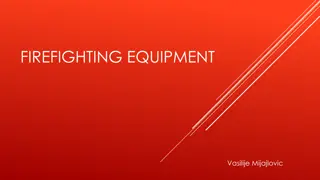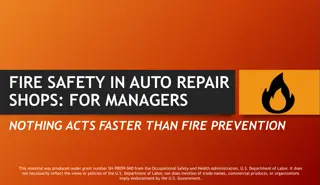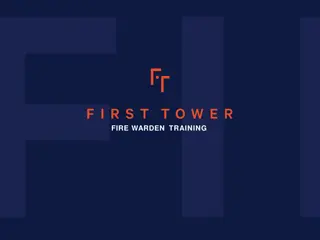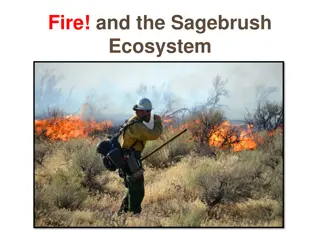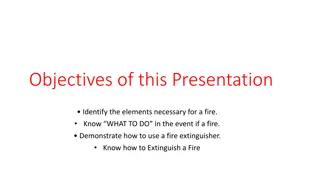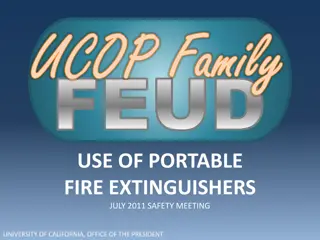Vehicle Fire Training Program Overview
This training program focuses on teaching trainees the basics of size-up on a car fire and the safe approach to a burning vehicle. It covers aspects such as identifying life hazards, wind direction, access to the vehicle, potential hazards like batteries and fuel spills, and proper positioning of apparatus and firefighters. Trainees also learn about removal of victims, cooling down fuel sources, and techniques for opening doors, windows, hood, and trunk safely during firefighting operations. Practical hands-on exercises simulate real-life scenarios to enhance learning.
Download Presentation

Please find below an Image/Link to download the presentation.
The content on the website is provided AS IS for your information and personal use only. It may not be sold, licensed, or shared on other websites without obtaining consent from the author.If you encounter any issues during the download, it is possible that the publisher has removed the file from their server.
You are allowed to download the files provided on this website for personal or commercial use, subject to the condition that they are used lawfully. All files are the property of their respective owners.
The content on the website is provided AS IS for your information and personal use only. It may not be sold, licensed, or shared on other websites without obtaining consent from the author.
E N D
Presentation Transcript
Equipment: Department engine Full turnout gear Extinguishers SCBA (with spare air tanks) for each student Set of Irons, Small hand tools Car to burn plus matches and fuel Ambulance & Safety Officer Smithtown Training Center
Objective: To have the trainees learn the basics of size-up on a car fire and the safe approach to a burning vehicle (signal 14). Teach how and when to apply water and how and when to open doors, windows, hood and trunk.
Size-up What is life hazard (conscious, unconscious or trapped) Wind direction (exposures to buildings), terrain Access to vehicle (windows open, doors unlocked and who has keys). Cars, vans, buses, trucks, electric cars or garbage trucks Hazards batteries, fuel, air bags, bumpers, alternate fuel, (Placard on cars/trucks) smoke, fuel spill and noxious fumes (possible use of extinguisher or foam). Magnesium parts wheels, motor block Smoke and noxious fumes Fuel Spills How many air bags are in the Vehicle (front, side)
Positioning Apparatus: 1stdue Up wind and away from the fuel tank. Stay about 100 feet from vehicle that s on fire. Determine if you are going to need a hydrant (locate one) or strictly a tank operation. 2nddue Will supply water if necessary, block traffic Assist in opening doors, hood and trunk, Search for victims (they may not be in the vehicle) 3rd due block traffic standby for a second alarm,
Firefighter Positioning: Removal of victim - must move right in and get water between the fire and the victim\rescuers. Backup line to cool down fuel source Water can be applied from a distance depending on the nozzle setting. All lines should move in at 45-degree angle, keeping in mind bumpers and pistons (non-engine), they can explode when heated. Air bags can deploy at 350 degree Fahrenheit and tires may also explode. Foam may be used for fuel spills Windows, doors, trunk and hood should be opened as water flows. Trunks can be opened by hammering abs end of the halligan into the lock to knock the cylinder out and use a screwdriver to turn and open. Hoods can be opened with a halligan fork and or pulling lock release wire by hand. Volkswagen motors, sports car wheels and a few other items may be made of magnesium and present a problem when water is applied.
Evolution 1: Hands on operation (no fire) using actual vehicle and flowing water. Hand lights should be used to represent fire in different parts of the vehicle. The Training Officer should set-up various scenarios including trapped victims, dangerous chemicals, fuel spill, etc. Trainees in full gear and in SCBA (on air) should walk through the various simulations taking the part of the truck team and hose team in turns. Available trainees not directly involved should critique each operation. If possible, trainees should attempt to open the vehicle trunk and or hood using a halligan and broad head ax.
Evolution 2: Live fire start water at seat of fire if no victims in the car. Repeat evolution 2 as required in order too switch personnel. Evolution 3: Live fire This will be a foam attack. Put down a blanket of foam around and under car and in the motor compartment. Change personnel during attack, as this may be a one- fire evolution.
